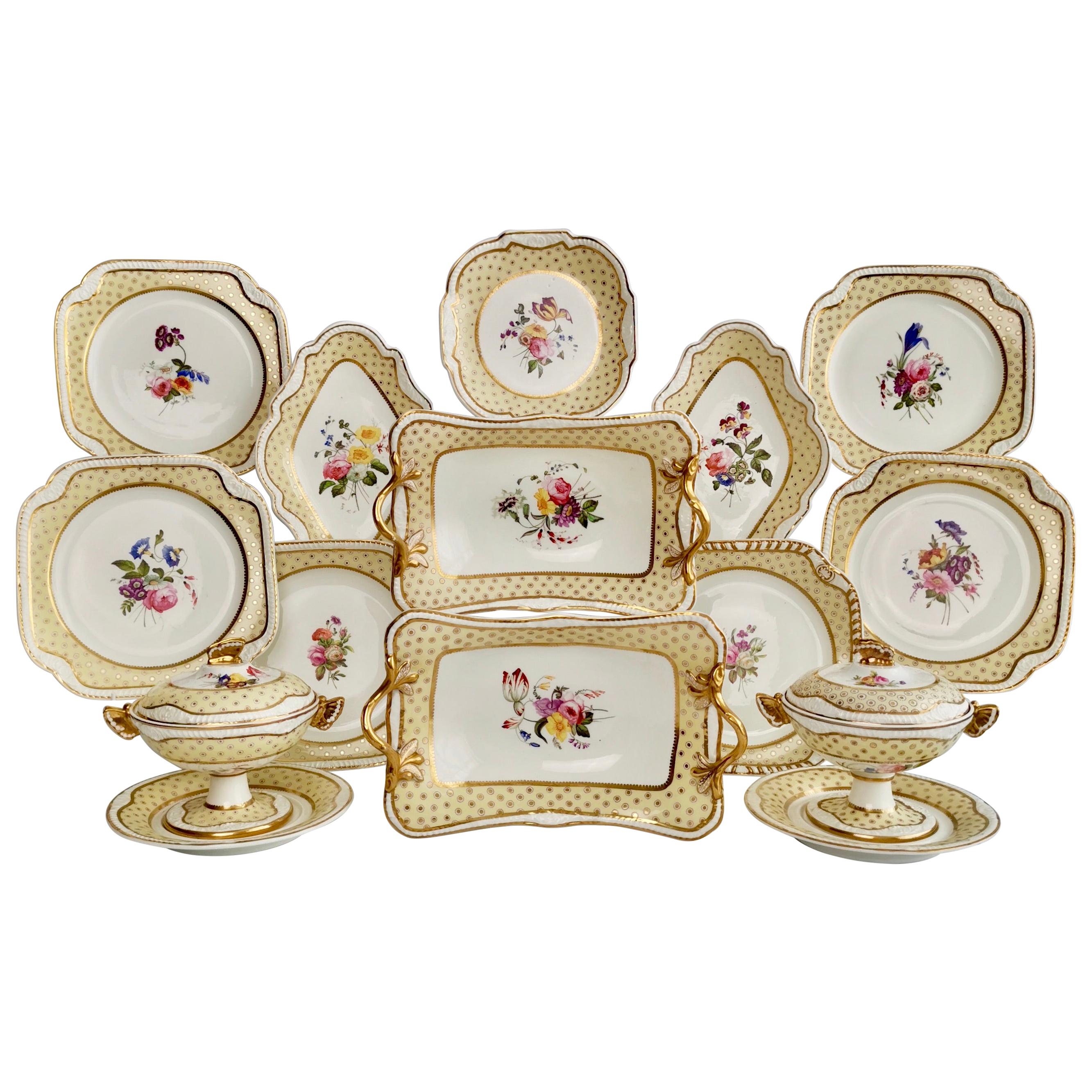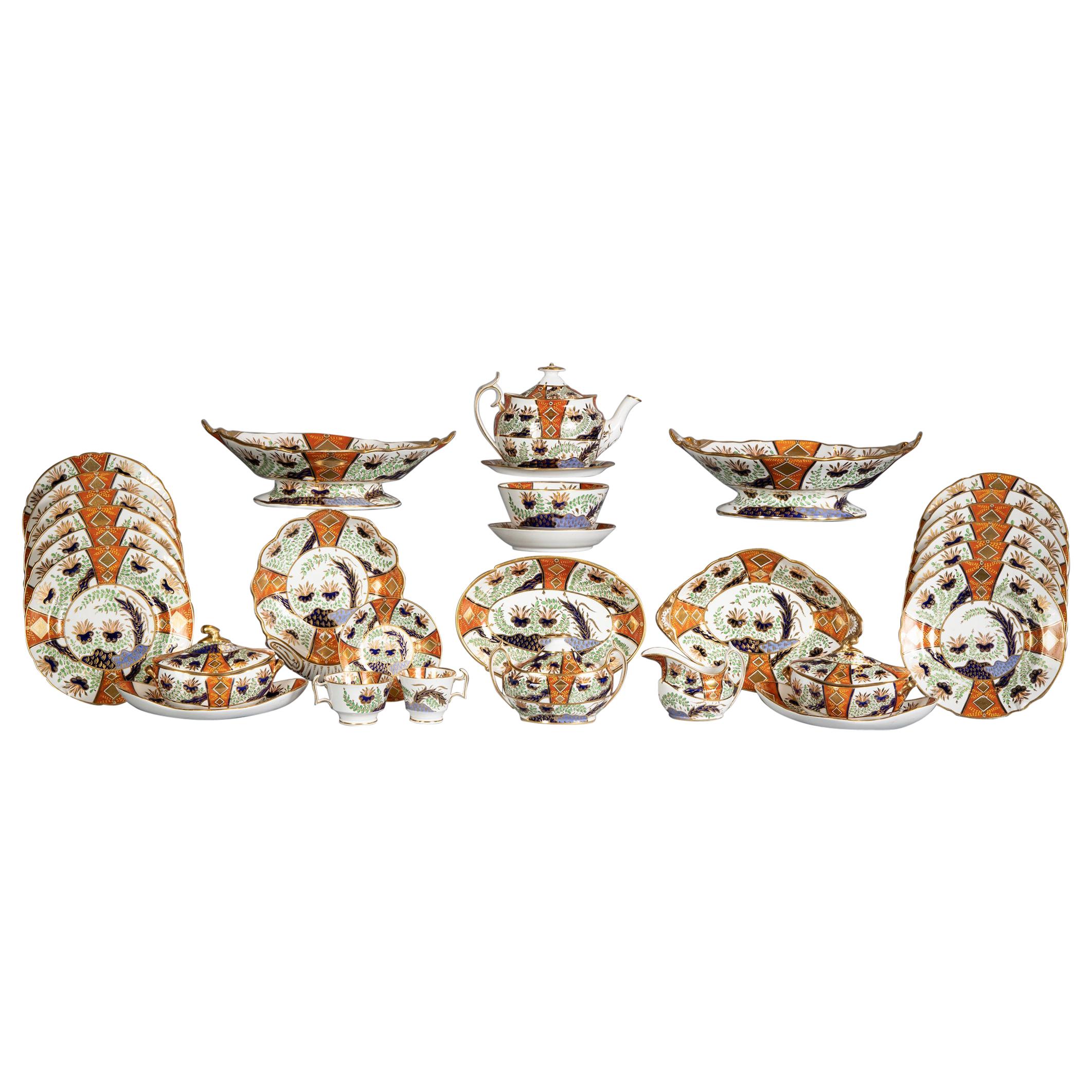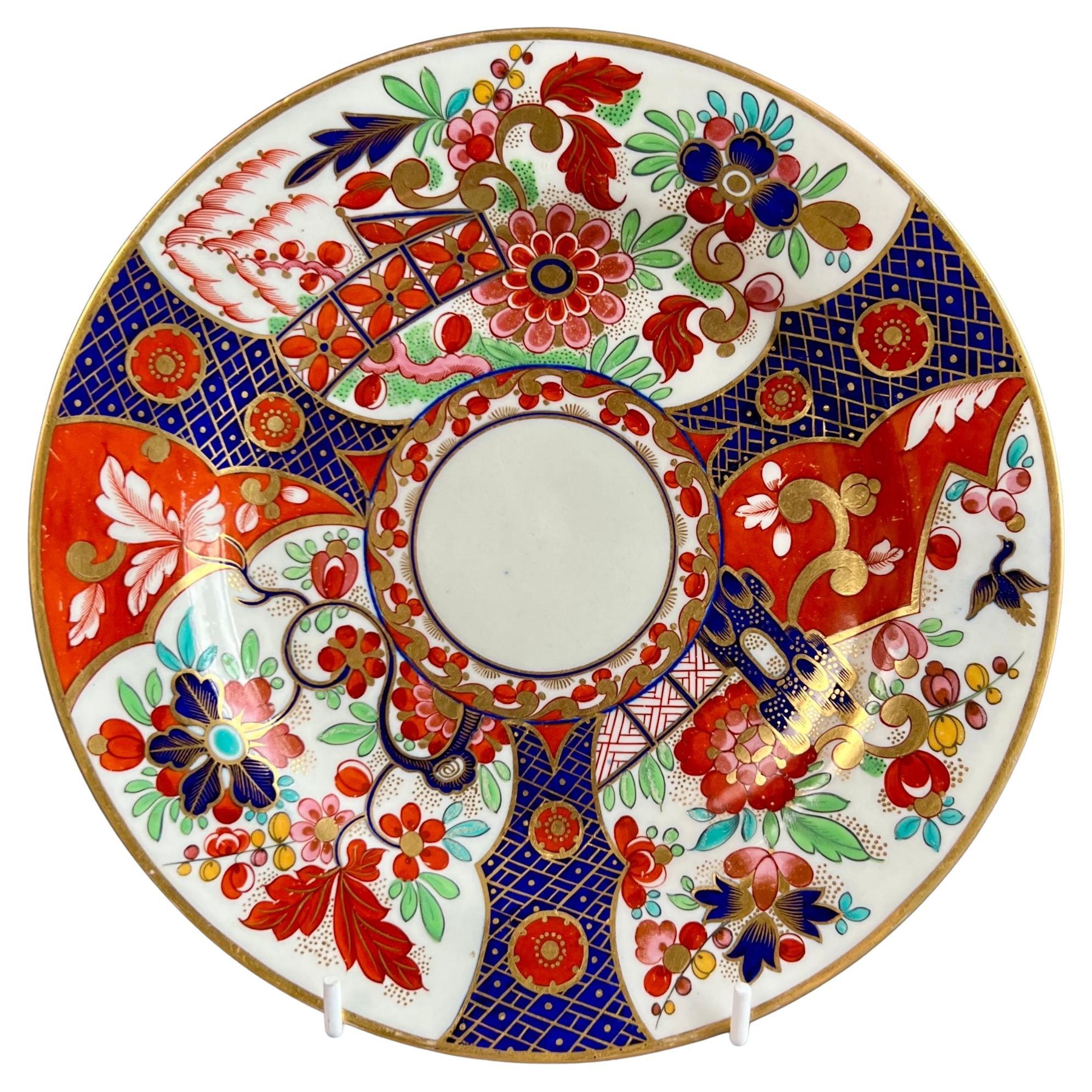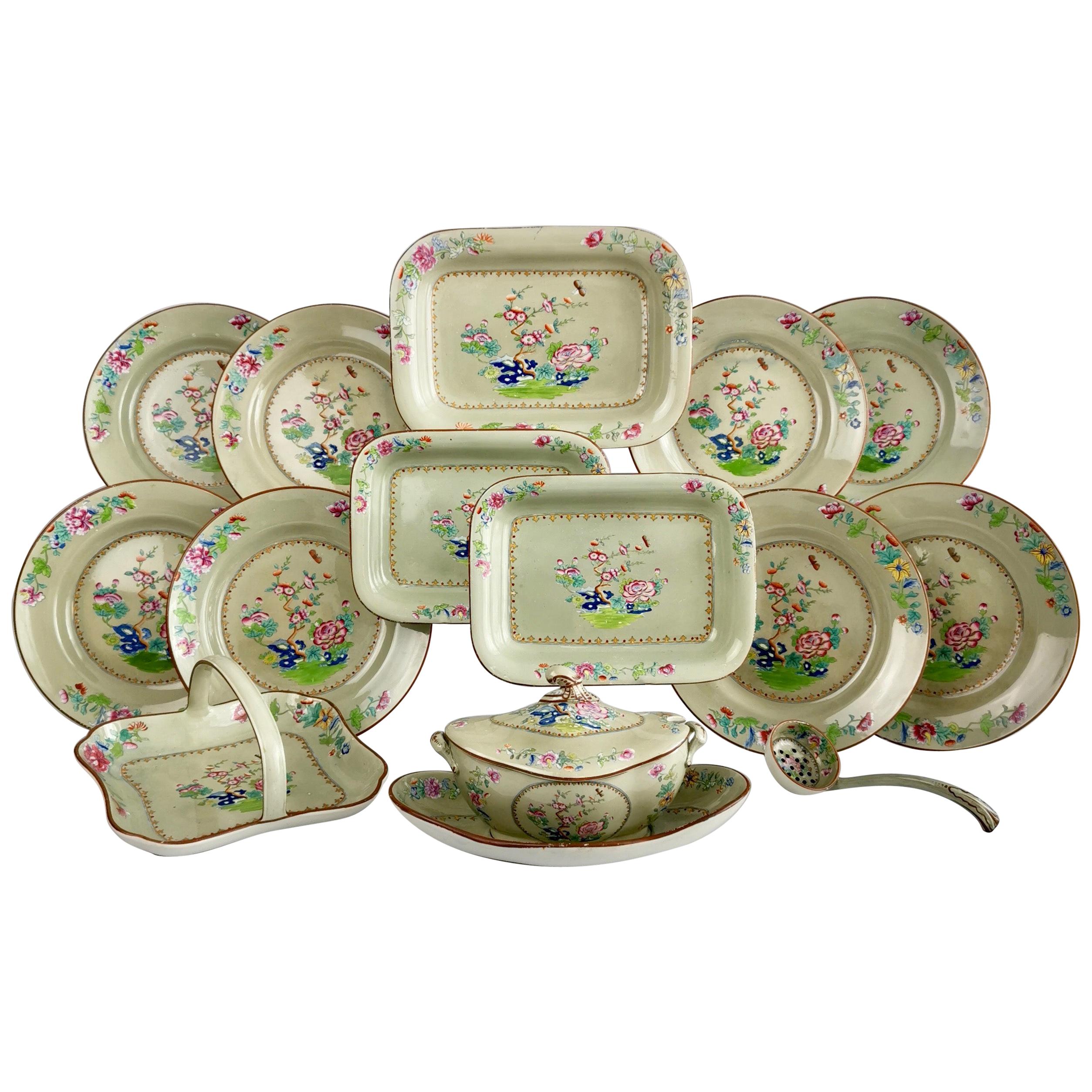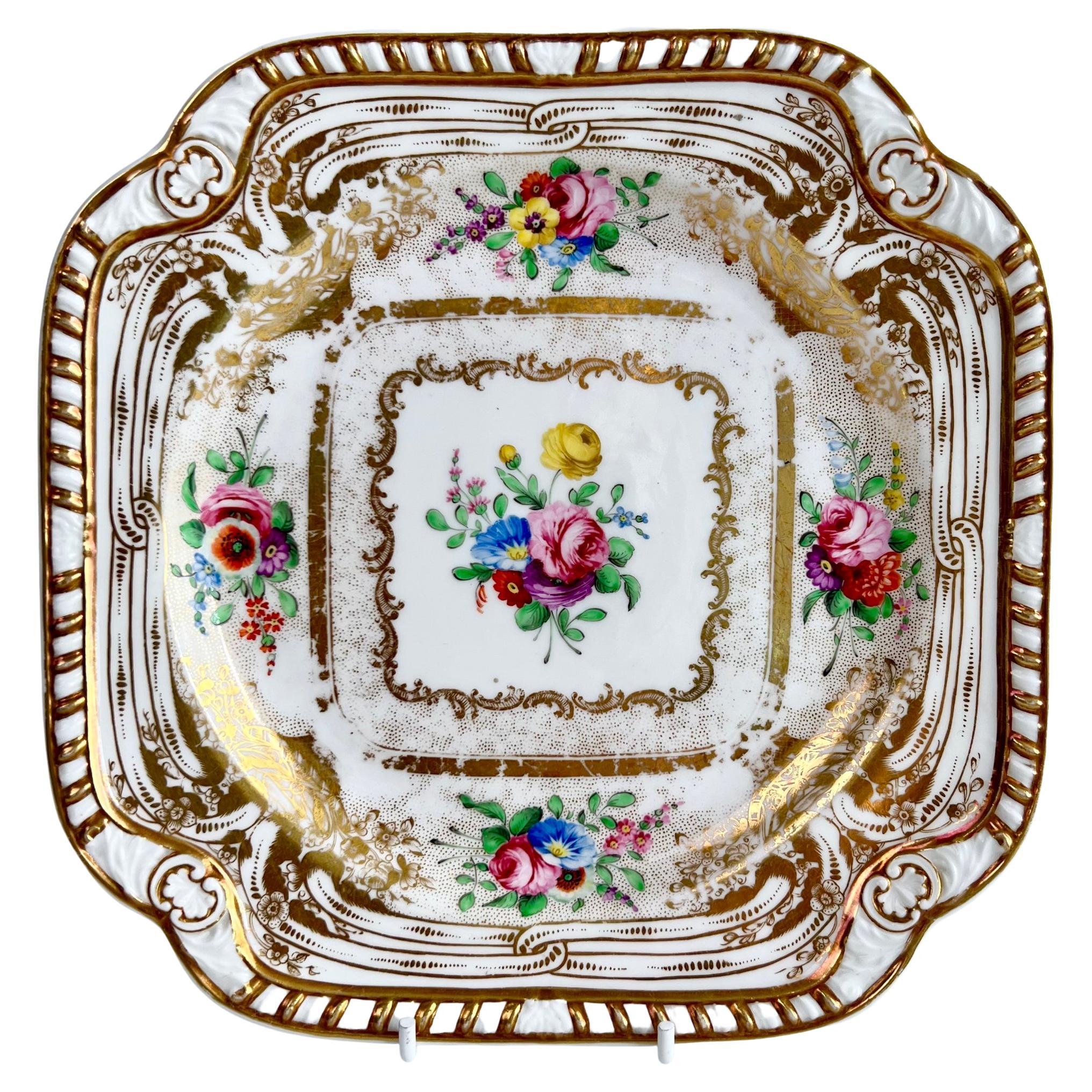Set of 11 Early Spode Ironstone Imari Dessert Dishes Made circa 1815
About the Item
- Creator:Spode (Maker)
- Dimensions:Height: 0.5 in (1.27 cm)Diameter: 8 in (20.32 cm)
- Sold As:Set of 11
- Style:Regency (In the Style Of)
- Materials and Techniques:
- Place of Origin:
- Period:
- Date of Manufacture:circa 1815
- Condition:Wear consistent with age and use. Light wear to some enamels and gilding on dishes commensurate with age and use. The plates with the least and most amounts of wear are pictured.
- Seller Location:Fort Lauderdale, FL
- Reference Number:
Spode
Spode is one of the oldest and most distinguished of the great pottery companies of Staffordshire, the time-honored home of English ceramics. The firm’s blue and white bone china transferware is a timeless classic. Spode dishes compose the sort of elegant dinner service that most of us envision on a traditional holiday table.
The company was established in 1770 in Stoke-on-Trent by Josiah Spode, a friend and neighbor of another estimable English ceramist, Josiah Wedgwood. Spode was particularly known for two technical achievements in the firm’s early decades. The first was to develop a standard formula for the making of bone china — a type of porcelain (made with a mixture of bone ash, minerals and clay) that is dazzlingly white and so strong it can be used to create very thin translucent plates and vessels. The other was to perfect the making of transferware. That process involves the transfer of pictorial images inked on tissue paper — such as the garden scenery in the famous Willow dish patterns — onto ceramics that are then sealed with a glaze. In 1833, following the sudden death of Josiah Spode III, business partner W.T. Copeland took over the company and changed its name. Collectors regard Copeland-marked pieces as Spode china. The Spode brand was revived in 1970.
From the 1820s onward, Spode enjoyed tremendous success both in Britain and elsewhere owing to the beauty and vitality of its decorative imagery. By some counts, Spode created more than 40,000 patterns in the 19th century. Many favorite Spode patterns — among them Blue Italian, India Tree, Greek and Woodland — date to the company’s early years. Spode’s most popular pattern, Christmas Tree, was introduced in 1938. Prices for Spode china vary widely, based on the size of the service, its condition and the pattern. An antique dinner service for 12 people or more, in good repair and complete with cups and serving dishes, will generally cost between $10,000 and $20,000. Such Spode services become heirlooms — a proud and timeless addition to a family’s table. And as you will see on these pages, Spode’s rich and varied wares offer a visual feast in and of themselves.
- ShippingRetrieving quote...Ships From: Fort Lauderdale, FL
- Return PolicyA return for this item may be initiated within 2 days of delivery.
- Early Wedgwood Neoclassical Creamware Dessert Dishes Made circa 1780By WedgwoodLocated in Fort Lauderdale, FLA set of four early Wedgwood creamware Neoclassical dessert dishes made circa 1780. Sir William Hamilton’s Collection of Etruscan, Greek and Roman an...Category
Antique Late 18th Century English Neoclassical Ceramics
MaterialsCreamware
- 18th Century Italian Doccia Porcelain Dinner ServiceBy Doccia PorcelainLocated in Fort Lauderdale, FLA dinner service comprising six dinner dishes and six soup dishes made by the Doccia Porcelain Manufactory, circa 1750. Italy was the site of Europ...Category
Antique Mid-18th Century Italian Rococo Dinner Plates
MaterialsPorcelain
- 18th Century Worcester Blind Earl Porcelain DishBy 1st Period Worcester Dr. Wall, James GilesLocated in Fort Lauderdale, FLA Worcester Blind Earl porcelain plate made circa 1770 with beautifully enamelled decoration of butterflies and insects among raised leaf and rose...Category
Antique 1770s English Rococo Porcelain
MaterialsPorcelain
- Early Spode Regency Dollar Pattern Punch BowlBy SpodeLocated in Fort Lauderdale, FLA large Spode Regency porcelain punch bowl in the Dollar pattern, made in England circa 1810. This punch bowl, designed by English potters after Asian motifs and named for an American currency, presents a fascinating instance of globalization in the ceramic medium. The Spode Dollar pattern...Category
Antique 1810s English Regency Serving Bowls
MaterialsCeramic, Porcelain
- Pair of Chamberlains Worcester English Porcelain Armorial DishesBy Chamberlains WorcesterLocated in Fort Lauderdale, FLA pair of English porcelain soup dishes made by Chamberlains Worcester circa 1825. Made circa 1825, this pair of porcelain soup dishes is an excellent example of the stunning qual...Category
Antique Early 19th Century British Rococo Revival Porcelain
MaterialsPorcelain
- Early Spode Red Greek Pattern TileBy Spode, Josiah SpodeLocated in Fort Lauderdale, FLA Neoclassical red transferware tile made by Spode 1806-1810, with the ‘Refreshments for Phliasian Horseman’ pattern. Sir William Hamilton’s Collection of Etruscan, Greek and Roman antiquities, first published in 1766 by Pierre d’Hancarville, was a landmark publication in English design. It intended to disseminate the Antique style through its engravings of Attic pottery. The catalog’s faithful reproductions of Classical vases led British potteries, including Spode, to adapt or even copy the ancient art for modern life. These Spode Greek pattern tiles reflect the major influence of Hamilton’s catalog on English Neoclassicism. The central scene was taken directly from the catalog. This tile can be dated to a narrow window of production in the Spode factory, 1806-1810. During that time, Spode used a technique known as the “Pluck and Dust” method to print in red transfer designs onto creamware. Using this method, source prints were transferred overglaze using tissue imprinted with a very faint rendition of the design outlined in sticky oil. The decorator applied the tissue to the object then carefully “plucked” or pulled it away, leaving the sticky oil design behind. Then, a finely-ground enamel color was “dusted” onto the surface, sticking to any areas that had the oil. A final firing at a low temperature in the enamel kiln made the pattern permanent. The Pluck and Dust technique improved upon bat-printing and enabled larger designers to be transferred. It was short-lived, however, as under-glaze transfer printing soon took over as the preferred method for producing transferwares. Dimensions: 5 in. x 5 in. x 1/4 in. Condition: Excellent. Slight chip to the upper left corner measuring approximately 0.9 cm. in length. Provenance: The Collection of Nancy and Andrew Ramage Jonathan Horne...Category
Antique Early 19th Century English Neoclassical Pottery
MaterialsEarthenware, Creamware
- Large English Porcelain Imari Pattern Dessert and Tea Service, Spode, circa 1815Located in New York, NYIron-red uppercase Spode mark and pattern 2213. Richly painted in the Imari palette and enriched in pale-blue, green and gold with flowering shrubs and a tree, the border with altern...Category
Antique 1810s English Dinner Plates
MaterialsPorcelain
- Spode Felspar Floral Dessert Service, Yellow, Butterfly Handles, circa 1822By SpodeLocated in London, GBThis is a stunning and very rare dessert service made by Spode in 1822, which was the Regency era. This beautiful service, which is in perfect condition, would be fantastic for a summer dinner party! The service is made of Felspar porcelain and decorated in a beautiful pale yellow colour with an "Oeil de Perdrix" pattern and top quality floral reserves. The service consists of two lidded sauce tureens with stands, two deep rectangular dishes, two lozenge shaped dishes, one square dish, and six square dessert plates Spode was the great Pioneer among the Georgian potters in England. Around the year 1800 he perfected the bone china recipe that has been used by British potters ever since, and he was also the leading potter behind the technique of transferware, making it possible for English potters to replace the Chinese export china...Category
Antique 1820s English Regency Porcelain
MaterialsPorcelain
- Flight Barr & Barr Porcelain Dessert Plate, Rich Imari, Regency, circa 1815By Flight, Barr & Barr WorcesterLocated in London, GBThis is a stunning dessert plate made by Flight Barr & Barr around the year 1815. It is decorated with what is often called the "Rich Imari" pattern, and sometimes the "crazy Japan" ...Category
Antique 1810s English Regency Dinner Plates
MaterialsPorcelain
- Spode Imperial China Dessert Service, Frog Pattern in Mauve, Regency circa 1828By SpodeLocated in London, GBThis is a very striking part dessert service made by Spode in about 1828, which is the Regency era. It is made of Spode's Imperial China and has the Frog pattern in mauve/purple. It consists of a high footed comport...Category
Antique 1820s English Regency Porcelain
MaterialsIronstone
- Spode Creamware Dessert Service, Avocado Green, Chinoiserie, Regency, 1814By SpodeLocated in London, GBThis is a beautiful Spode creamware dessert service made in 1814, which was the Regency era. The service is decorated in a printed and hand-colored Chi...Category
Antique 1810s English Regency Porcelain
MaterialsCreamware
- Spode Felspar Square Dessert Plate, Gilt and Flowers, Regency 1824By SpodeLocated in London, GBThis is beautiful square dessert plate made by Spode around the year 1824. The set was made in the famous Spode Felspar china, which was a bright porcelain that included felspar rock, making it exceptionally robust and very suitable for large table services. This plate was a spare of a large dessert service that was sold previously. An identical service is on display in the Spode Museum in Stoke on Trent, on the original place where this service was produced. In a wonderful moment of serendipity, I happened to be standing and admiring that service exactly the moment the service this plate belonged to came up for auction - and I won the bid, enabling me to present it here to you! Josiah Spode was the great pioneer among the 19th Century potters in England. Around the year 1800 he perfected the bone china recipe that has been used by everyone ever since, and he was also the leading potter behind perfecting the technique of transferware, making it possible for English potters to replace the Chinese export china, which had come to an end around that time, with their own. This was fundamental to a thriving industry that would last for about 150 years and provide half the world with their tableware. In the early 19th Century Spode also made this "Felspar" porcelain, which was even stronger thanks to a large percentage of the strong felspar rock in the recipe. In the early 19th Century, dinner and dessert services were an important part of the social life of the elite, and particularly the dessert service had to be stunning in order to leave guests with a lasting impression of the wealth and power of the owner. This plate is part of such a show piece. The plate has the printed Spode Felspar Porcelain mark in puce, as well as a hand painted pattern number 3765. CONDITION REPORT The plate is in good undamaged antique condition, with its only flaw being some wear as visible in the pictures. Antique British porcelain...Category
Antique 1820s English Regency Porcelain
MaterialsPorcelain
